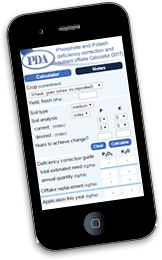Maize and rye for AD plants
August 2017
With the huge increase in area producing forage maize and rye for anaerobic digesters, it seems timely to remember a couple of the nutrient issues that arise which can be different from normal growing practice.
Firstly, harvesting often occurs earlier with the crop being greener than for normal animal feed purposes. The implication being that with the less mature plant, the Phosphate and Potash content (and therefore nutrient removal) may be higher than the standard values used over the years, and as quoted in our PDA leaflet (Nutrients in Crop Material) and the AHDB Nutrient Management Guide (RB209).
Secondly, there a number of these crops being promoted and grown on contract, on the basis that “the digestate will be returned to the farm”. With its valuable nutrient content, it is implied that no additional Phosphate and Potash are needed. Where this is the case, it is important to ensure that it is applied to these specific fields and not elsewhere e.g. fields which may be more convenient! Also, the application rate needs to be adequate for the full replacement of the removed nutrients.
Both issues mean that the crop offtakes of Phosphate and Potash may not be adequately replaced in the nutrient plans for the fields, and soil levels will fall over time. This fall would be more rapid and serious where repeat crops are grown. As always, the yields of such crops need to be measured and recorded to give good data for future nutrient plans, and to look out for falling yields. Finally, and fortunately, growers can easily get the nutrient analysis of the digestate from the AD plant. This is especially important where the “returned” digestate is not the “whole” digestate but simply the liquid fraction, which will have a different nutrient content.

